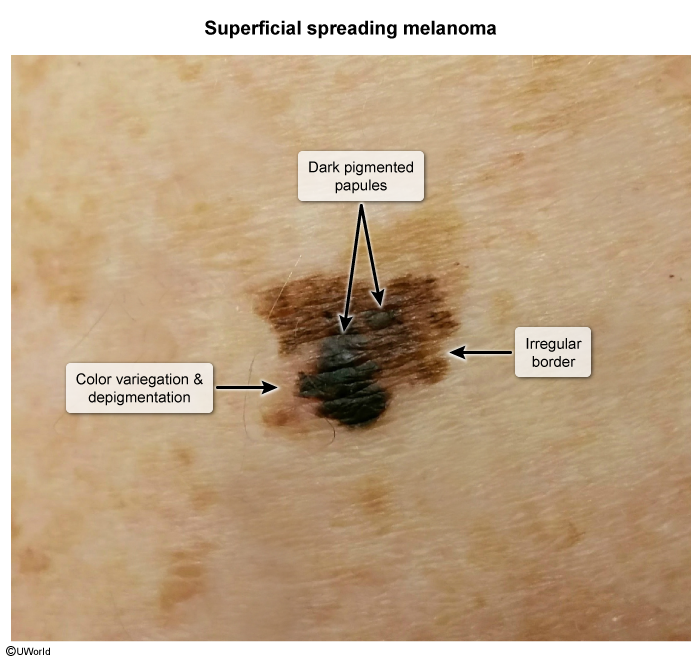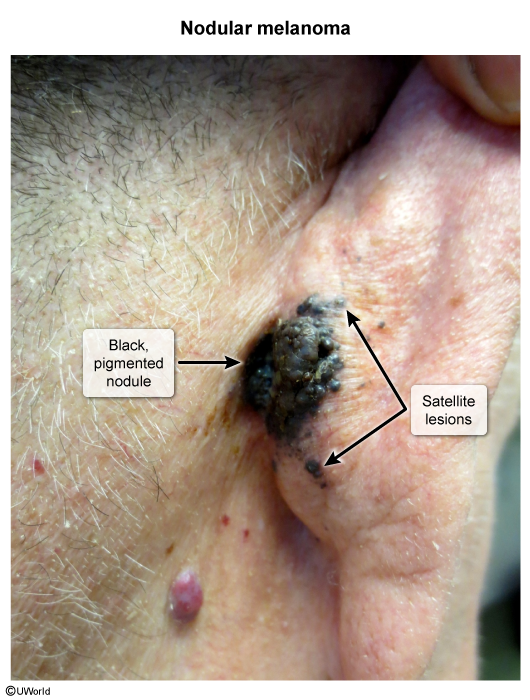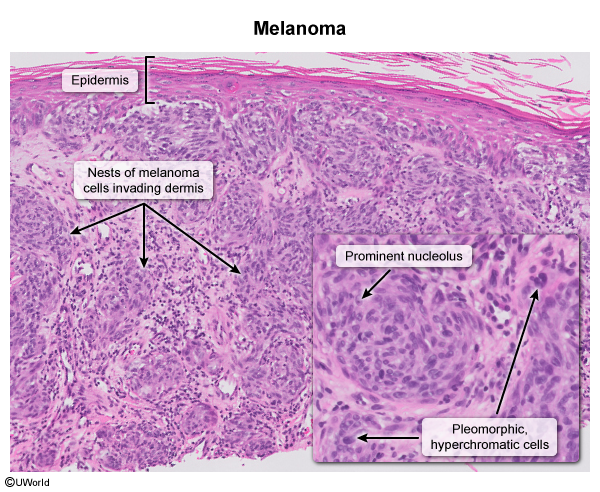Melanoma
Article Sections
Introduction
Skin cancer is one of the most prevalent malignancies, with millions of cases diagnosed annually. The 3 most common forms are squamous cell carcinoma, basal cell carcinoma, and melanoma. Melanoma is an aggressive form of skin cancer originating from melanocytes, pigment-producing cells in the epidermis. It is known for its high metastatic potential and accounts for the majority of skin cancer-related deaths. Early detection and treatment are critical for improving outcomes.
Pathophysiology
Melanoma arises from genetic mutations that lead to uncontrolled melanocyte proliferation. The most common mutations involve the BRAF, NRAS, and KIT genes (Figure 1).
Melanoma typically begins as a small macule with gradual, superficial enlargement confined to the epidermis (ie, the radial growth phase); surgical resection is relatively straightforward and often curative at this stage. Later, the tumor may enter a vertical growth phase, characterized by palpable thickening, invasion of the dermis, and distant metastasis; resection at this stage is more challenging and may not be curative.
Continue Learning with UWorld
Get the full Melanoma article plus rich visuals, real-world cases, and in-depth insights from medical experts, all available through the UWorld Medical Library.
Figures
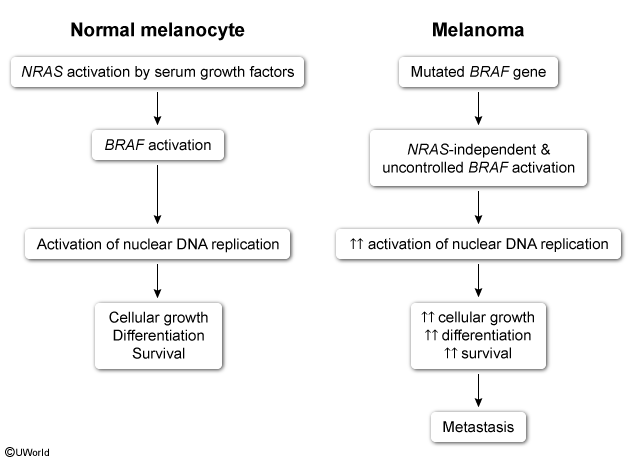
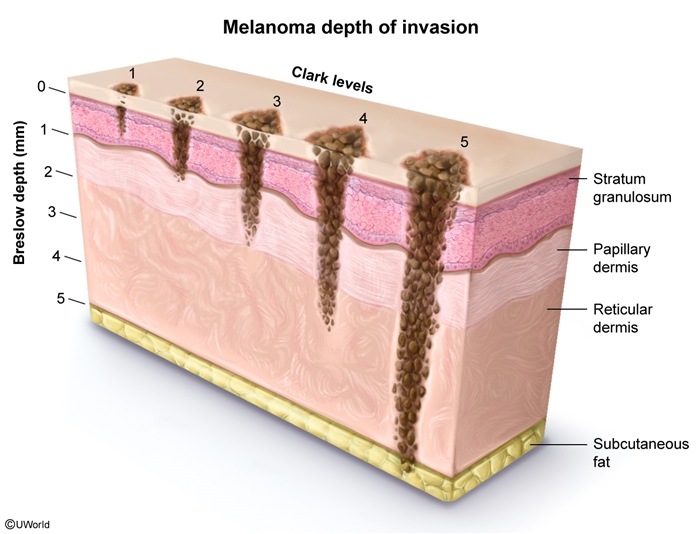
Images
